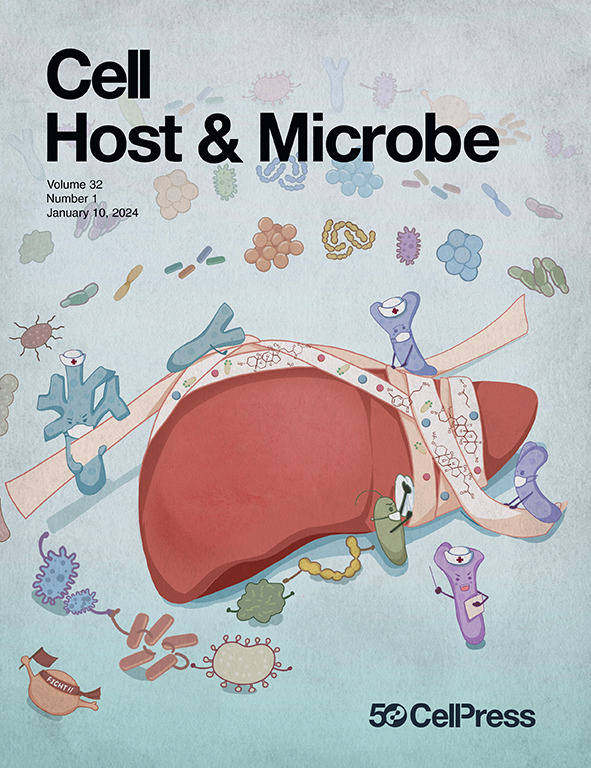突破植物NLR免疫的分类学界限
IF 18.7
1区 医学
Q1 MICROBIOLOGY
引用次数: 0
摘要
由于受限制的分类功能(RTF), nlr型免疫受体转移到远亲植物物种以扩大病原体识别通常是困难的。在最近的Cell出版物中,Du和Alam等人通过传感器和辅助nlr的共同转移克服了RTF,这被用作跨物种的功能性免疫模块。本文章由计算机程序翻译,如有差异,请以英文原文为准。
Breaking open the taxonomic boundaries of plant NLR immunity
Transfer of NLR-type immune receptors to distantly related plant species to expand pathogen recognition has often been difficult due to restricted taxonomic functionality (RTF). In a recent Cell publication, Du and Alam et al. overcame RTF by co-transfer of sensor and helper NLRs, which was used as a functional immunity module across species.
求助全文
通过发布文献求助,成功后即可免费获取论文全文。
去求助
来源期刊

Cell host & microbe
生物-微生物学
CiteScore
45.10
自引率
1.70%
发文量
201
审稿时长
4-8 weeks
期刊介绍:
Cell Host & Microbe is a scientific journal that was launched in March 2007. The journal aims to provide a platform for scientists to exchange ideas and concepts related to the study of microbes and their interaction with host organisms at a molecular, cellular, and immune level. It publishes novel findings on a wide range of microorganisms including bacteria, fungi, parasites, and viruses. The journal focuses on the interface between the microbe and its host, whether the host is a vertebrate, invertebrate, or plant, and whether the microbe is pathogenic, non-pathogenic, or commensal. The integrated study of microbes and their interactions with each other, their host, and the cellular environment they inhabit is a unifying theme of the journal. The published work in Cell Host & Microbe is expected to be of exceptional significance within its field and also of interest to researchers in other areas. In addition to primary research articles, the journal features expert analysis, commentary, and reviews on current topics of interest in the field.
 求助内容:
求助内容: 应助结果提醒方式:
应助结果提醒方式:


